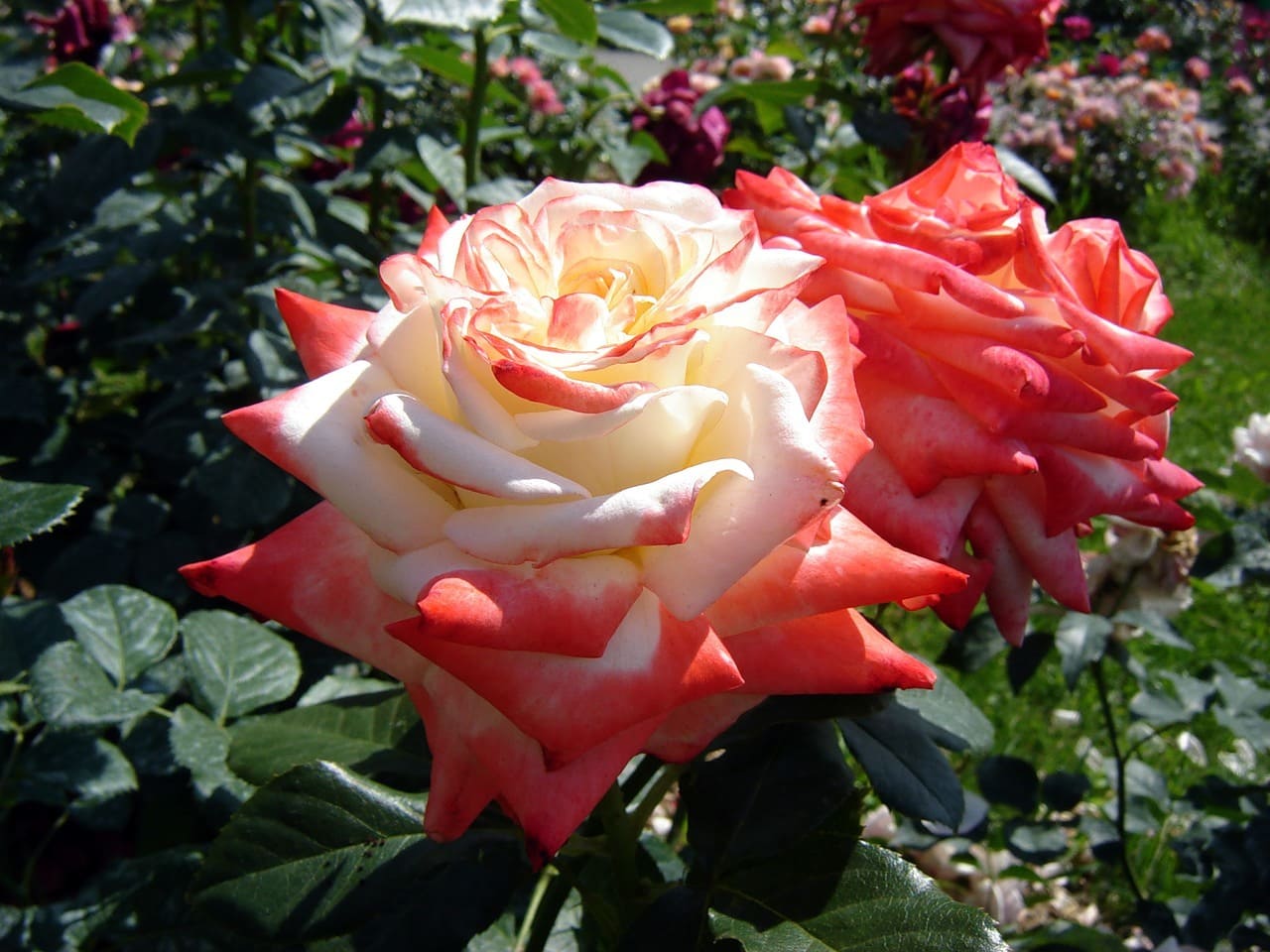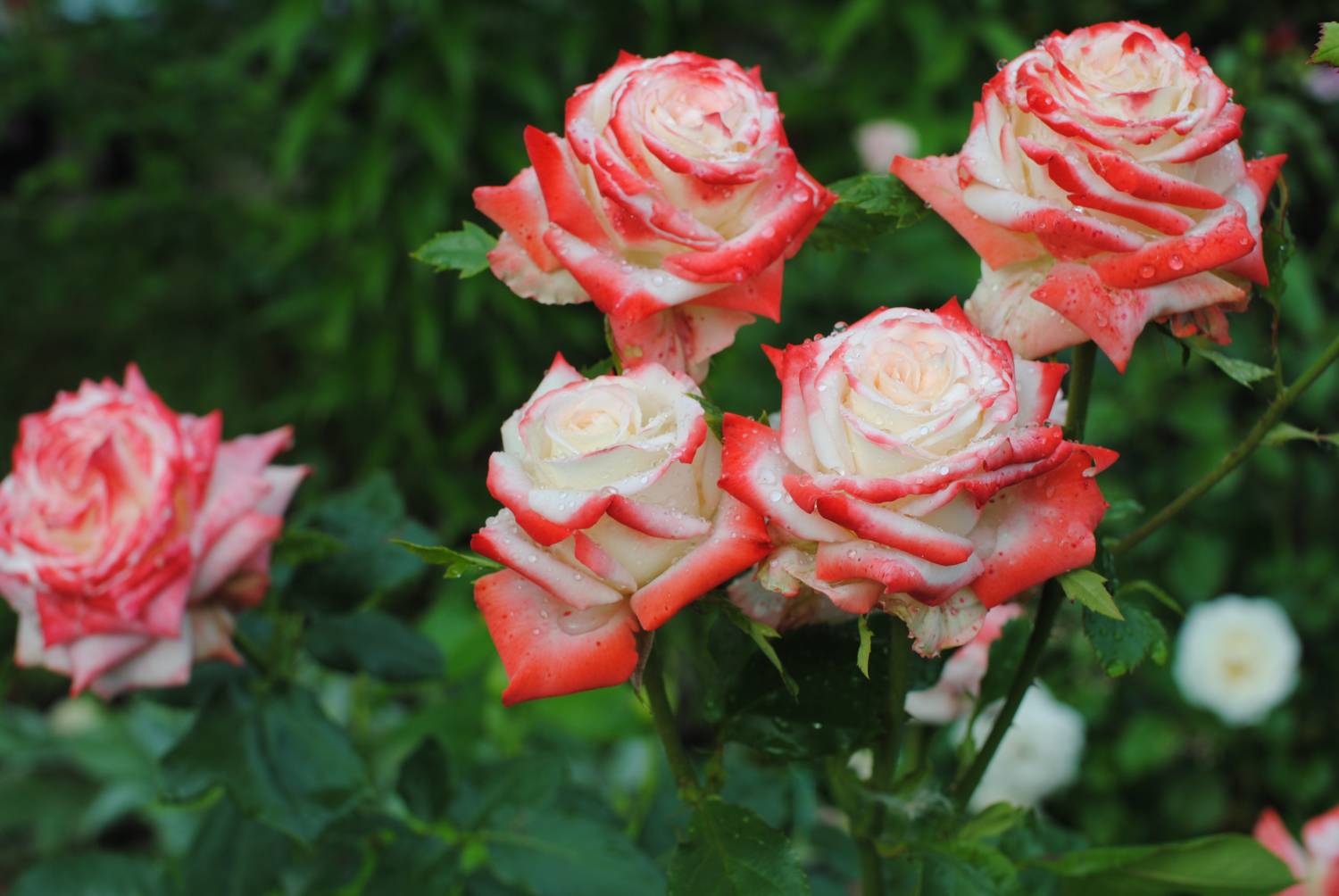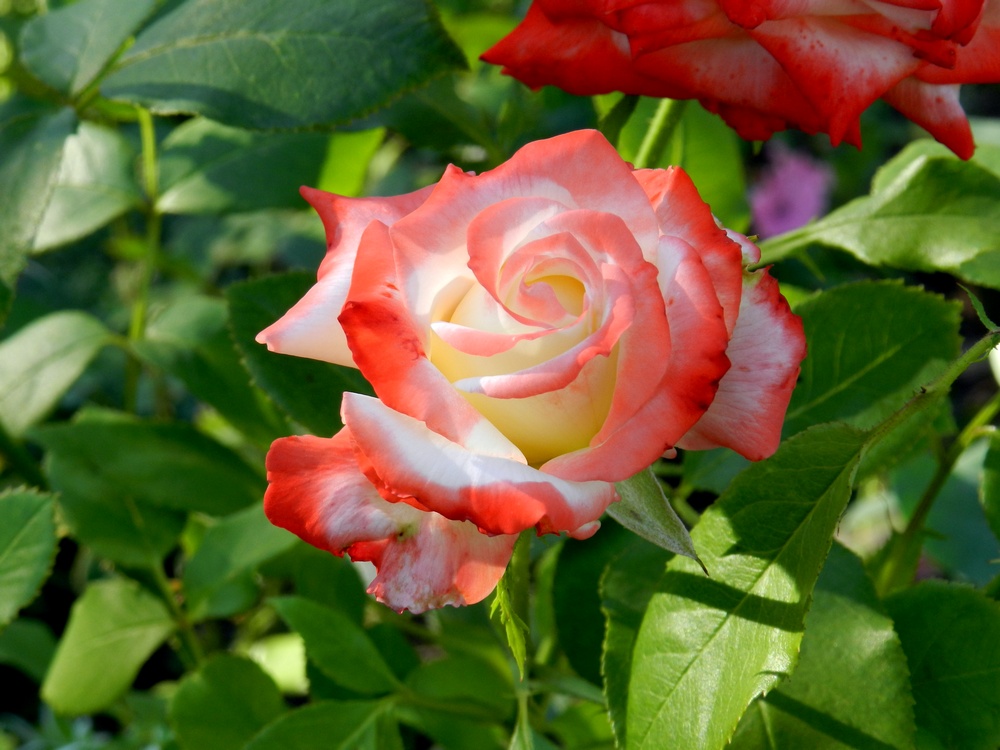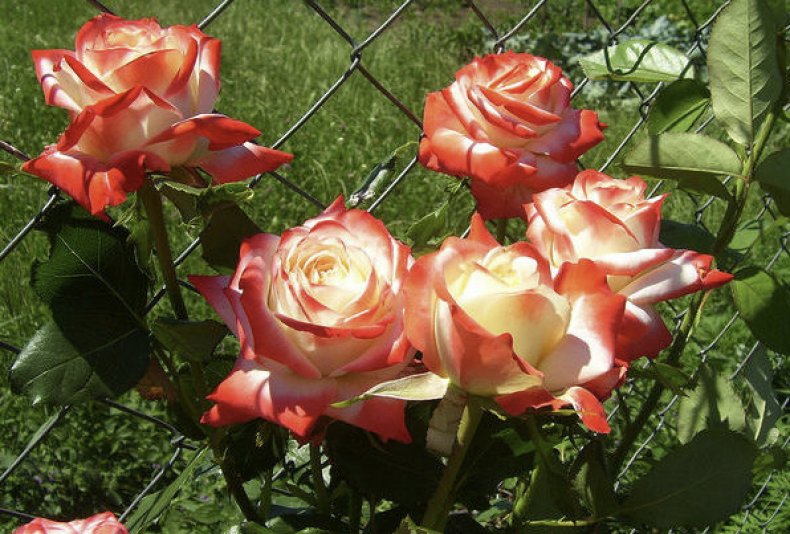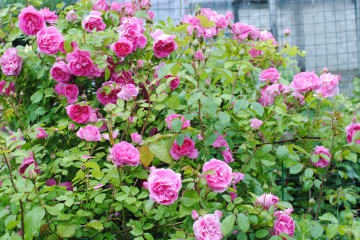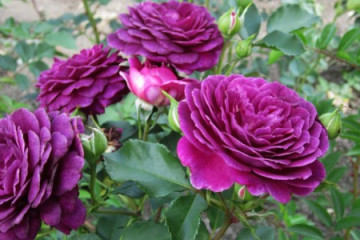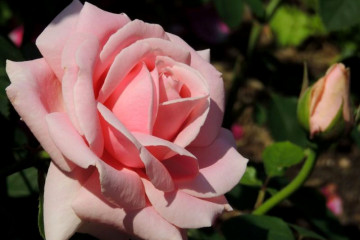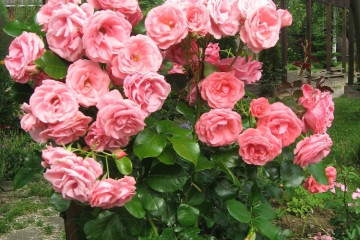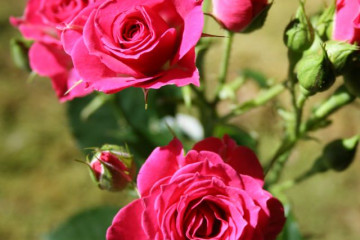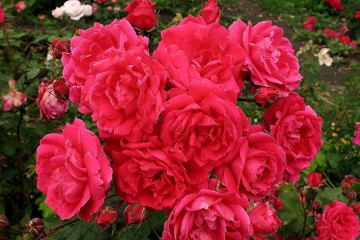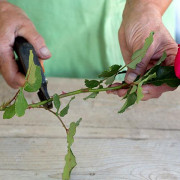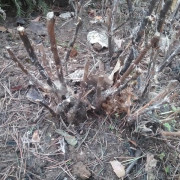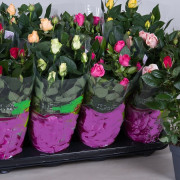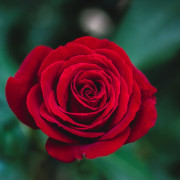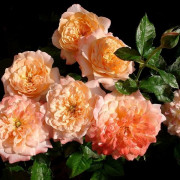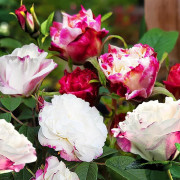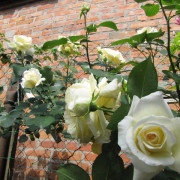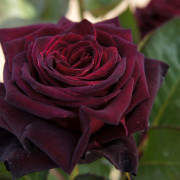Rose Empress Farah (Imperatrice Farah)
Content:
Rose is a rather capricious plant. However, there are varieties that easily adapt to any conditions and do not cause much trouble for the gardener. The Empress Farah rose variety is just such a variety. It is very popular due to its long and abundant flowering, as well as ease of care.
Origin of the variety
Rose Empress Farah is a hybrid tea variety. Its description is similar to that of other similar varieties.
These hybrids are characterized by:
- Large flower sizes;
- Long flowering without interruption;
- Tall bushes;
- Resistant to temperature extremes.
This variety was bred by the French in the early 1990s. After a few years, she began to gain popularity in Russia.
Short description
The size of an adult plant is up to 120 cm in height. The flowers are large, double, and have a bright red color. Other options are possible: lilac, raspberry, orange. On the inside, the petals are whitish. The shape of the flowers resembles a glass.
Large double flowers most often have the following color:
- Scarlet;
- Raspberry;
- Lilac;
- Yellowish orange.
During flowering, the plant is especially vulnerable.
Advantages and disadvantages
Rose Princess Farah is good because it has strong immunity to diseases and pests. It also blooms for a very long time, almost all spring and summer. Among the shortcomings, it can be noted that in Russia it is difficult to get seedlings of this variety, they are quite expensive.
Use in landscape design
Rose Farah will be a wonderful decoration for any garden plot. As a rule, bushes are planted in groups around the perimeter of the site, and they act as a kind of hedge. Single bushes in the center of the site also look beautiful. Plants with flowers of different shades can be planted in a specific sequence to create an interesting "pattern" during flowering.
Growing
Planting is done with seedlings.
You can plant a rose when:
- The threat of frost is long gone;
- The nights are getting warm;
- The soil warms up well;
- Daylight hours have lengthened significantly.
If all conditions are met, you can plant the rose in open ground.
Landing in open ground
The rose is planted in pits filled with compost or humus. In addition, fresh manure is introduced. A week after planting, peat mulching is carried out.
Boarding time
In the Russian Central Lane, landing is carried out in the second - third decade of May. In more northern regions, this time is shifted by about a week (30th of May). The weather during planting of seedlings should be sunny and dry.
Location selection
The place should be bright and well sheltered from the wind (for example, next to fruit trees, but not in the shade). It is desirable that the groundwater is located as far from the surface as possible.
Soil and flower preparation
The Empress should be planted in the holes filled with the nutrient mixture. Ash and complex fertilizer superphosphate are added to the compost (humus). The day before, the planting material is cut off and soaked in a growth stimulator.
Step-by-step instruction
The seedling is carefully placed in a dug hole and covered with earth. The soil is not compacted. After that, watering is performed. You can slightly huddle. In the future, it is necessary to water as the soil dries out.
Care
The main care measures are:
- Pruning;
- Watering and loosening;
- Top dressing;
- Preparation for wintering.
Proper care is necessary for the plant to retain its spectacular appearance for a long time.
Watering rules and humidity
One bush needs 2 buckets of water. If the summer was rainy, this dose decreases. Watering is often impossible, so as not to destroy the roots. The recommended time for watering is morning and evening, when there is no extreme heat.
Top dressing and soil quality
Rose Queen Farah loves slightly acidic soils, grows poorly on sand and in swampy areas. The soil should be loose, with a large percentage of loam. When feeding, special complex fertilizers for roses are used.
Pruning and replanting
The main purpose of pruning is the correct formation of the crown and the removal of diseased, deformed shoots. Pruning is carried out immediately before wintering. It is better to transplant as little as possible - the plant has a very sensitive root system.
Wintering features
The flower tolerates frost well. Before leaving for the winter, the plant is fed one last time with loosening the soil. Spruce branches are used as a covering material.
During periods of activity and rest
The resting period of the Emperor Farah rose lasts quite a long time: from October to the end of March. The peak of plant activity occurs in late May - early June, it is at this time that most of the varieties of Empress Farah bloom.
During and after flowering
During flowering, potash fertilizers should be applied regularly, they contribute to the correct formation of buds. In the fall, feeding should be reduced. When the rose has completely bloomed, pruning is carried out to remove dried flowers and deformed branches.
What to do if it does not bloom
If Empress Farah does not bloom, the timely introduction of complex feeding can save the situation. Rose reacts well to potassium and phosphorus. You can also try increasing watering, especially in hot weather.
Flower propagation
The flower is propagated by cuttings. Shoots should be young, not completely woody. Cuttings prepared for planting can be kept in the refrigerator for two weeks.
Reproduction is carried out in late April - early May. Cuttings are cut in the morning and immediately wrapped in a damp plastic wrap.
For correct grafting you need:
- choose a healthy shoot with two buds;
- cut off the top and bottom sheets;
- soak in a growth stimulator;
- rinse and put in water until the stalk sprouts.
Diseases and pests, the fight against them
The hybrid tea Empress Farah has a strong immunity to diseases and pests. However, plants are sometimes attacked by omnivorous aphids. In this case, spraying with industrial insecticides will help.
In order for the rose to delight with flowers longer, it is necessary to monitor the moisture content of the soil, and also regularly apply mineral fertilizers. Also, when caring for this variety, great attention should be paid to preventive spraying against diseases and pests. If a cold winter is promised, proper preparation for wintering is essential.
